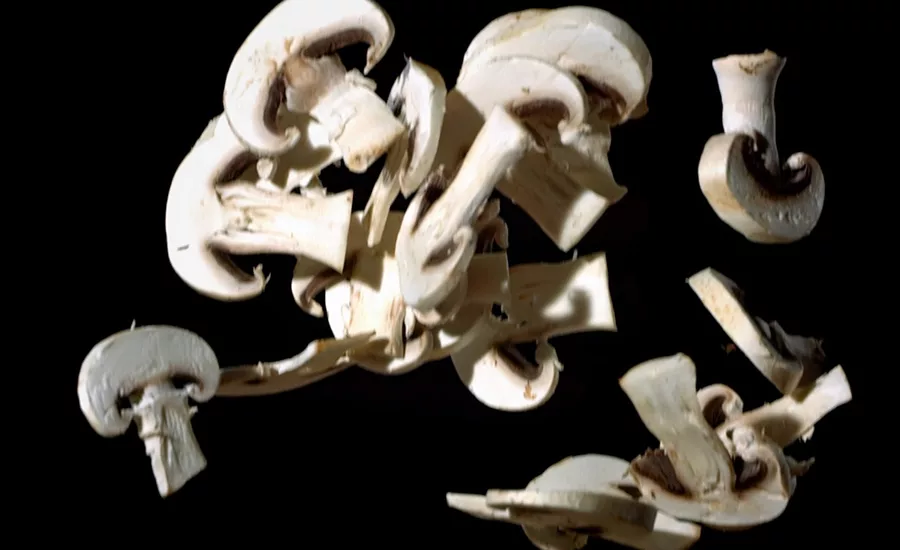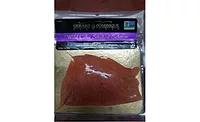Strategies to Reduce Clostridium botulinum Risk in Fresh-Cut Produce
Increasing consideration of C. botulinum as a potential pathogen of concern is emerging for fresh-cut vegetables, fruits, and mushrooms

The risks associated with Clostridium botulinum and low-acid canned foods, meats, seafood, and temperature-abused foods are generally well-established. However, there has been increasing consideration toward C. botulinum and its potential as a pathogen of concern for fresh-cut vegetables, fruits, and mushrooms.
For an industry segment beleaguered by recent outbreaks of Shiga toxin-producing Escherichia coli, Salmonella enterica, and Listeria monocytogenes, consideration of a bacterial pathogen with vastly different growth characteristics—one that is less traditionally associated with fresh produce—may seem burdensome. However, recent incidences of C. botulinum in packaged mushrooms,1 increased characterization of the growth conditions required by nonproteolytic C. botulinum, widespread industry adoption of modified atmosphere packaging (MAP), and even increasing fuel costs may necessitate a second look at this pathogen's association with fresh produce.
What is C. botulinum?
C. botulinum is the causative agent of botulism. The bacterium forms a thermotolerant spore, which allows it to survive for long periods in the environment and through mild to moderate thermal processes. When exposed to favorable growth conditions (e.g., ambient temperatures, moisture, anaerobic or low oxygen-containing atmospheres, and nutrients), the spore can germinate, multiply, and produce botulism toxin.
Many instances of illness can occur when foods containing C. botulinum are left at ambient temperatures that enable toxin production and then reheated, as the toxin can persist in the food. Small dosages of botulism toxin (30 ng) can be lethal, and early indications of botulism include loss of motor skills and muscular function. When the muscles of the diaphragm are affected, respiratory failure can occur.2
C. botulinum growth and toxin production occur in foods or substrates with pH above 4.6. This puts most fresh-cut vegetables and some fruits that have higher pH, including melons, within the suitable range for C. botulinum growth. Therefore, to control C. botulinum growth, the fresh-cut produce industry relies on other interventions. Refrigeration is a primary means of controlling many foodborne microbial hazards, including C. botulinum. However, temperature growth ranges for C. botulinum vary. Proteolytic C. botulinum includes highly heat-resistant strains that produce toxins at 10 °C–12 °C and higher. Nonproteolytic C. botulinum are slightly less heat-tolerant than proteolytic strains, but may persist in inadequately canned or processed products. Additionally, nonproteolytic C. botulinum are psychrotrophs that can grow and produce toxin in cold-storage temperatures as low as 3 °C.3 This temperature is lower than those of many commercial processing and storage facilities and consumer refrigerators, so temperature control alone may be inadequate to control the pathogen.
Temperature abuse occurring throughout distribution may exacerbate the risk to products. For example, turning off cooling systems in refrigerated trucks reduces fuel costs and is particularly likely to occur when trailer temperatures are recorded only when product is being loaded and unloaded. Product left on the loading dock for several hours can provide an opportunity for spore germination by both proteolytic and nonproteolytic C. botulinum, depending on how long the product is not temperature-controlled. If these previously temperature-abused products are placed in unmonitored home refrigerators above 3 °C, then the risks may be further enhanced.
Does Fresh-Cut Produce Pose a Risk?
C. botulinum spores are readily found in soils, including agricultural soils for produce production. While all produce is susceptible to contamination by C. botulinum, produce for which the edible portion pushes through the soil, such as mushrooms and asparagus, may be the most susceptible to contamination by spores. Data collected by the U.S. Centers for Disease Control and Prevention (CDC)4 identified vegetables as a major source of botulism outbreaks since the 1950s, but illness from vegetables was primarily due to inadequate home canning practices and not fresh produce.
Looking for quick answers on food safety topics?
Try Ask FSM, our new smart AI search tool.
Ask FSM →
Fresh-cut produce is frequently packaged and sold in modified atmosphere packaging, or MAP. The product may undergo a gas flush that modifies the atmosphere within the package (active MAP), or gases may diffuse through the packaging itself as the atmosphere within the container changes due to the produce's metabolic activity (passive MAP). For most produce types, the gas flush comprises up to 90–95 percent of an inert gas (often nitrogen), 1–5 percent oxygen, and 1–5 percent carbon dioxide. This low oxygen formulation slows produce spoilage by decreasing the rate of respiration, while still being sufficient to control germination of C. botulinum spores that require anaerobic conditions.
However, the atmosphere within these packaging types can vary throughout the product shelf life. Plant respiration continues after harvest, albeit at varying rates depending on produce type, storage temperature, and package atmosphere.5 During respiration, the plant tissues absorb oxygen and generate carbon dioxide and water. For MAP produce, the atmosphere within the package could eventually become anaerobic, which is conducive for C. botulinum growth.6 For this reason, fresh-cut produce is packaged in permeable or microperforated plastics that allow exchange of oxygen and carbon dioxide, ensuring that the environment within the bag remains aerobic throughout a product's shelf life.
The degree of packaging permeability can be selected based on a commodity's rate of respiratory activity, thereby reducing the extent to which the atmosphere within the package fluctuates.5 If gas exchange does not occur, such as when produce is packaged in an airtight container, then the environment can become anaerobic. While this environment may facilitate C. botulinum growth, the produce within the container also transitions from aerobic respiration to anaerobic respiration, the byproducts of which are carbon dioxide and ethanol. Produce undergoing anaerobic respiration rapidly degrades to the point that it is unfit, from a quality standpoint, for consumption.
A series of studies in the 1990s found that while botulism toxin could be produced on inoculated fresh-cut produce in anaerobic or other MAP conditions, by the time the toxin was present, the produce itself was typically inedible.7,8,9 In fact, after examining lettuce, cabbage, broccoli, carrots, and green beans under MAP, Larson et al.7 suggested that in the examined foods, the likelihood of botulism toxin production prior to spoilage was less than 1 in 100,000.
Some produce types may require additional consideration due to physiological differences that enhance their susceptibility to C. botulinum. Fresh mushrooms have been recalled for concerns over C. botulinum, including a Canadian recall that occurred in early 2021.1 Not only are mushrooms grown in close contact with the soil, and are therefore likely to contact C. botulinum spores, but they also have a very high respiration rate compared to other produce.10 Sugiyama and Yang11 determined that mushrooms wrapped in a semipermeable polyvinylchloride (PVC) film consumed oxygen faster than could permeate the film, resulting in botulism toxin formation before mushrooms were visibly spoiled. However, mushrooms in this study were stored at 20°C, and the team found that no botulism toxin was present on mushrooms stored at 4°C.11
A few years later, a group from the U.S. Food and Drug Administration (FDA) published a study indicating that when two 1/8-inch holes were added to the PVC film, no botulism toxin was present in packages of inoculated mushrooms.12 Holding mushrooms at refrigeration temperatures and ensuring ventilation within packaging film is important not only to reduce the risk of C. botulinum growth, but also to preserve the quality of this highly perishable food.
Best Practices for Controlling C. botulinum on Fresh-Cut Produce
Maintenance and monitoring of the cold chain is perhaps the most critical food safety and quality control to ensure that consumers receive high-quality fresh-cut vegetables, fruits, and mushrooms. Temperature fluctuations can exacerbate microbial hazards, including C. botulinum, and significantly reduce product quality and shelf life. When temperature control is combined with well-ventilated packaging for products like mushrooms, or with permeable film that allows oxygen and carbon dioxide exchange that corresponds with the approximate respiration rates of MAP commodities, the likelihood of C. botulinum toxin formation is low. Firms should evaluate the atmospheric compositions of their MAP products under likely temperature-abuse conditions to determine if the products would support the growth of C. botulinum throughout their expected shelf life.
Consumers can also reduce their likelihood of exposure by ensuring that the produce they purchase is not stored in airtight containers, is consumed within the product's shelf life, and is stored at the appropriate temperature. For refrigerated produce, using a calibrated thermometer within the home refrigerator can ensure that safe temperatures are maintained. Health Canada13 recommends that consumers store mushrooms in vented packaging or paper bags under refrigeration to ensure that C. botulinum growth and toxin formation does not occur, and any spoiled produce should be discarded.
References
- Canadian Health Inspection Agency. "Food Recall Warning—Belle Grove brand Whole White Mushrooms recalled due to potential presence of dangerous bacteria." January 9, 2021.https://inspection.canada.ca/food-recall-warnings-and-allergy-alerts/2021-01-08/eng/1610169805106/1610169810071.
- Peck, M. W. "Clostridium botulinum and the safety of minimally heated, chilled foods: An emerging issue?" Journal of Applied Microbiology 101, no. 3 (2006): 556–570.
- Lindström, M., K. Kiviniemi, and H. Korkeala, "Hazard and control of Group II (non-proteolytic) Clostridium botulinum in modern food processing." International Journal of Food Microbiology 108, no. 1 (2006): 92–104.
- U.S. Centers for Disease Control and Prevention. "Botulism in the United States, 1899–1996." Handbook for Epidemiologists, Clinicians, and Laboratory Workers. 1998. https://www.cdc.gov/botulism/pdf/bot-manual.pdf.
- Sandhya. "Modified atmosphere packaging of fresh produce: Current status and future needs." LWT—Food Science and Technology 43, no. 3 (2010): 381–392.
- Lilly, T. Jr., H. M. Solomon, and E. J. Rhodehamel. "Incidence of Clostridium botulinum in vegetables packaged under vacuum or modified atmosphere." Journal of Food Protection 59, no. 1 (1996): 59–61.
- Larson, A. E., E. A. Johnson, C. R. Barmore, and M. D. Hughes. "Evaluation of the botulism hazard from vegetables in modified atmosphere packaging." Journal of Food Protection 60, no. 10 (1997): 1208–1214.
- Larson, A. E. and E. A. Johnson. "Evaluation of botulinal toxin production in packaged fresh-cut cantaloupe and honeydew melons." Journal of Food Protection 62, no. 8 (1999): 948–952.
- Hao, Y. Y., R. E. Brackett, L. R. Beuchat, and M. P. Doyle. "Microbiological quality and production of botulinal toxin in film-packaged broccoli, carrots, and green beans." Journal of Food Protection 62, no. 5 (1999): 499–508.
- Ares, G., C. Lareo, and P. Lema. "Modified atmosphere packaging for postharvest storage of mushrooms: A review." Fresh Produce 1, no. 1 (2007): 32–40.
- Sugiyama, H. and K. H. Yang. "Growth potential of Clostridium botulinum in fresh mushrooms packaged in semipermeable plastic film." Applied Microbiology 30, no. 6 (1975): 964–969.
- Kautter, D. A., T. Lilly, Jr., and R. Lynt. "Evaluation of the botulism hazard in fresh mushrooms wrapped in commercial polyvinylchloride film." Journal of Food Protection 41, no. 2 (1978): 120–121.
- Health Canada. "Food Safety Tips for Mushrooms." 2019. https://www.canada.ca/en/health-canada/services/food-safety-fruits-vegetables/mushrooms.html.
Laurel L. Dunn, Ph.D., is an Assistant Professor and Extension Specialist in the Department of Food Science and Technology at the University of Georgia. Dr. Dunn's research program focuses on pre- and post-harvest interventions against foodborne pathogens on fresh produce. Additionally, Dr. Dunn has an interest in examining produce safety hazards throughout the supply chain, especially during shipping and warehousing.








